With the DJI Mini 3 Pro ND filters are an absolute must for time lapses and hyperlapses. They are also beneficial when shooting footage to apply the rule of thirds correctly. For photography, they are used only in some specific situations
ND filters are the best-selling accessory for drones, but many users don’t know much about them and often ask if they should buy them and why
Related articles about the Mini 3 Pro you might find interesting:
- Hyperlapses with the Mini 3 Pro
- Camera Settings for Video
- Camera Settings for Photography
- Photography with the Mini 3 Pro
- Mini 3 Pro beginner guide
- Mini 3 Pro video quality
- Long exposure photography
- Mini 3 Pro exposure settings
If you prefer to watch this as a video, you will find my YouTube version at the end of this article
The Mini 3 Pro Needs ND Filters More Than Other Drones
There is a widespread misconception that ND filters are needed to expose correctly on very bright days, but this is not true. We can use three tools to get the correct exposure: ISO, Aperture, and Shutter Speed
Most consumer drones don’t offer manual control of the aperture, but even in this case, we can generally expose correctly by using a very fast shutter speed
The Mini 3 Pro is the only drone or camera that needs ND filters to expose correctly In certain light conditions. Due to its very wide aperture of f1.7, in very bright conditions the image can be overexposed even when choosing the base ISO and the fastest shutter speed
So the Mini 3 is the exception to the rule: we need ND filters to dial in the correct exposure in very bright conditions by reducing the amount of light entering the sensor
More info in my article How to expose video and photo with the Mini 3 and 3 Pro
If you prefer to watch this as a video, you will find my YouTube version at the end
Why are ND filters used?
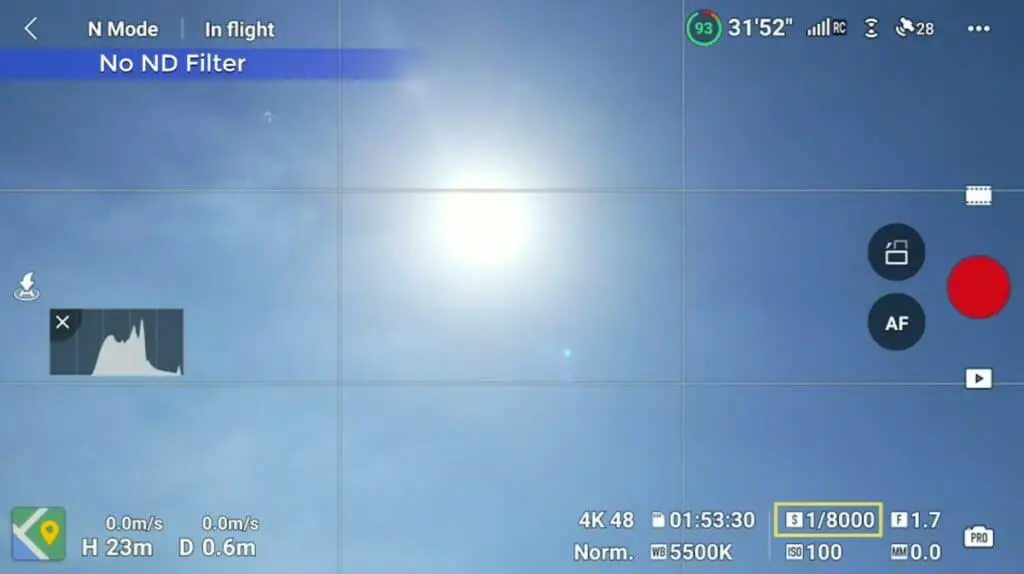
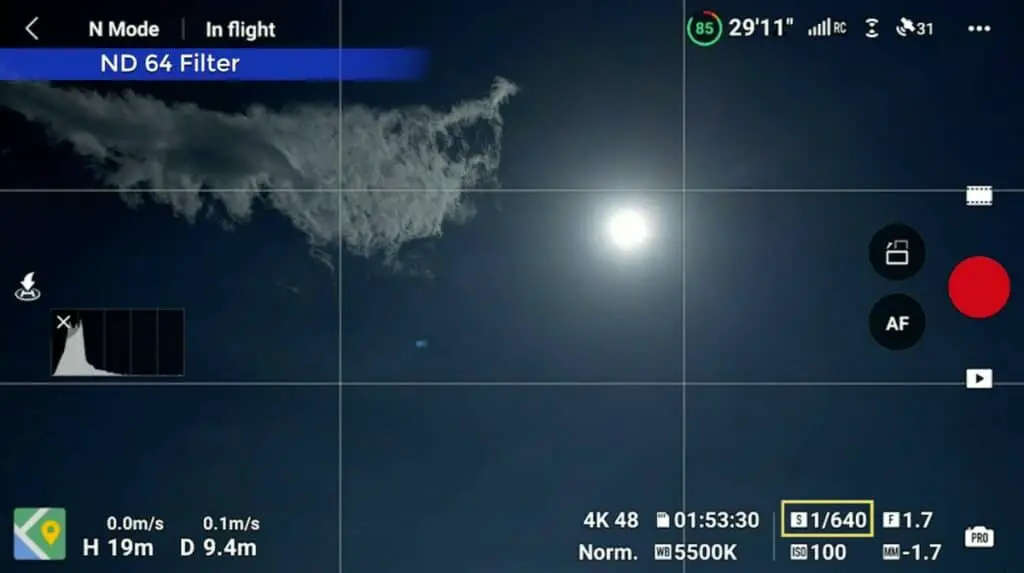
ND filters act like sunglasses for the lens. They are meant to reduce the amount of light entering the sensor simply
ND filters are mainly used to enable the use of a specific value for shutter speed and aperture regardless of the level of luminosity in the scene
A specific shutter speed is needed for the correct amount of motion blur, while a wide aperture is useful to control the depth of field
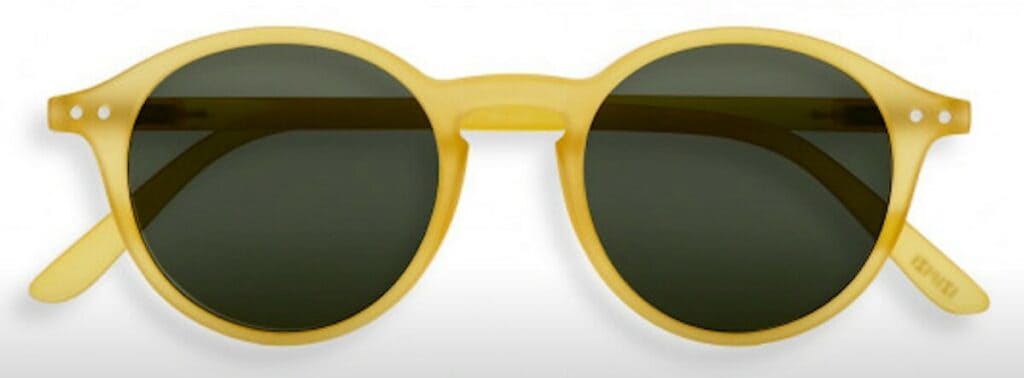
ND filters for Video
| Shutter Speed | Frame Rate |
| 1/50 | 24 or 24 fps |
| 1/60 | 30 fps |
| 1/100 | 50 fps |
| 1/120 | 60 fps |
In videography, according to a rule named 180-degree rule, the SS should be 1/50 of a second when we are using a frame rate of 24 or 25 frames per second, 1/60 of a second at 30 fps, 1/120 of a second at 60 fps, and so on. In other words, the denominator of the Shutter Speed value should be double the frame rate
When shooting video with the Mini 3 Pro, ND filters of the appropriate strength are needed to respect the shutter speed values indicated by the 180 degrees rule to reproduce movement in the way we see it in real life with the correct amount of motion blur
Quite often drone footage is shot from high altitudes
When the subject is far away and there are no moving elements, the difference in motion blur is hardly noticeable, so in this case, ND filters are not strictly needed
Getting closer to the action things are different
Cars on the motorway look more natural when shooting with ND filters at the correct shutter speed, as some motion blur is applied. Without filters, the movement appears jumpy and fake
Click on this link if you want more about the camera settings for video of the Mini 3 Pro for video
ND filters for Photography
ND Filters for Long Exposure Photos
There are two main reasons why photographers use ND filters: the first one is to get very long exposure shots to create a smooth, silky effect in clouds, waterfalls, fountains, or waves
But a drone drifting is not as stable as a camera on a sturdy tripod, therefore it is not possible to use shutter speeds longer than 1 second without introducing unwanted blur
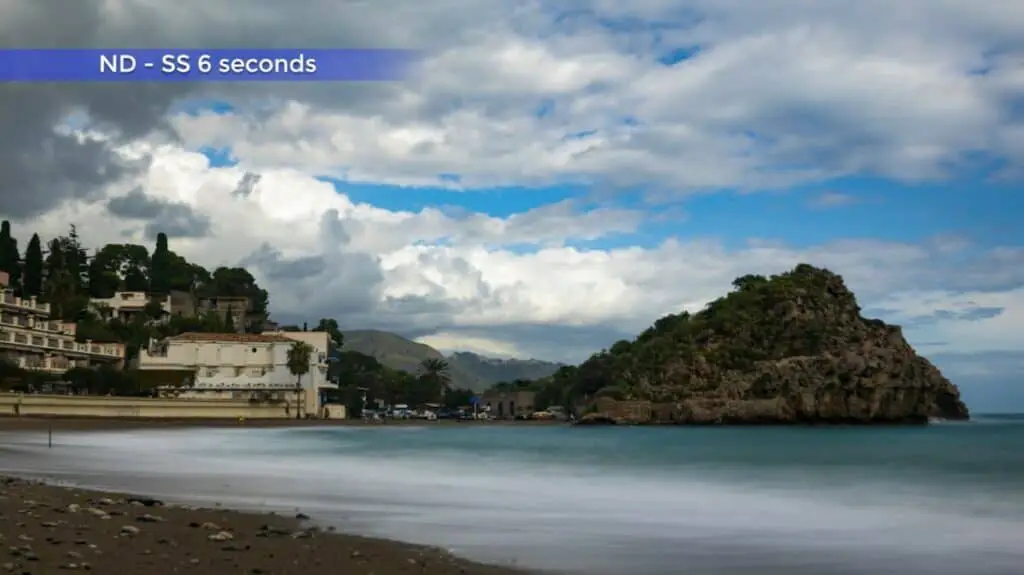
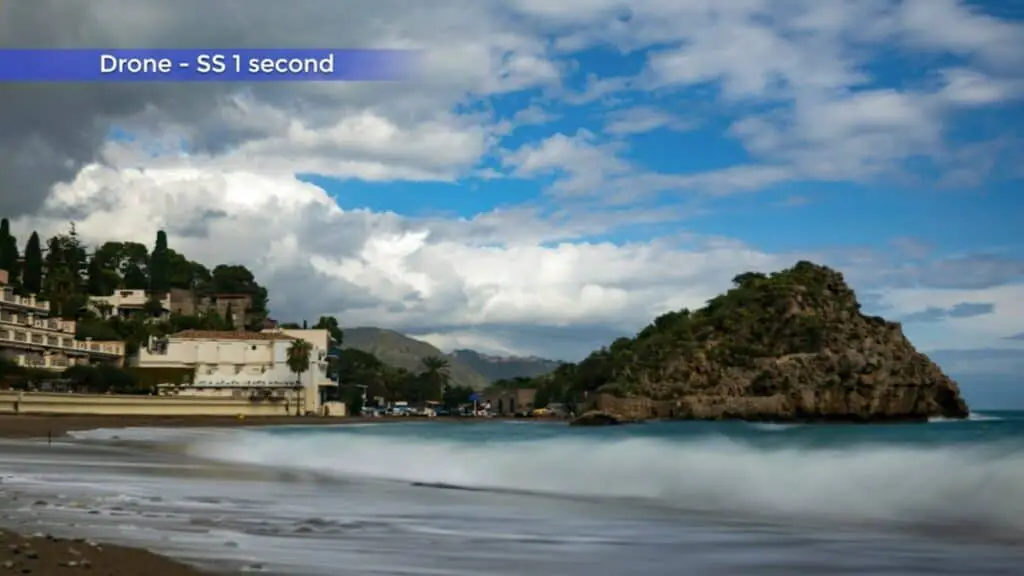
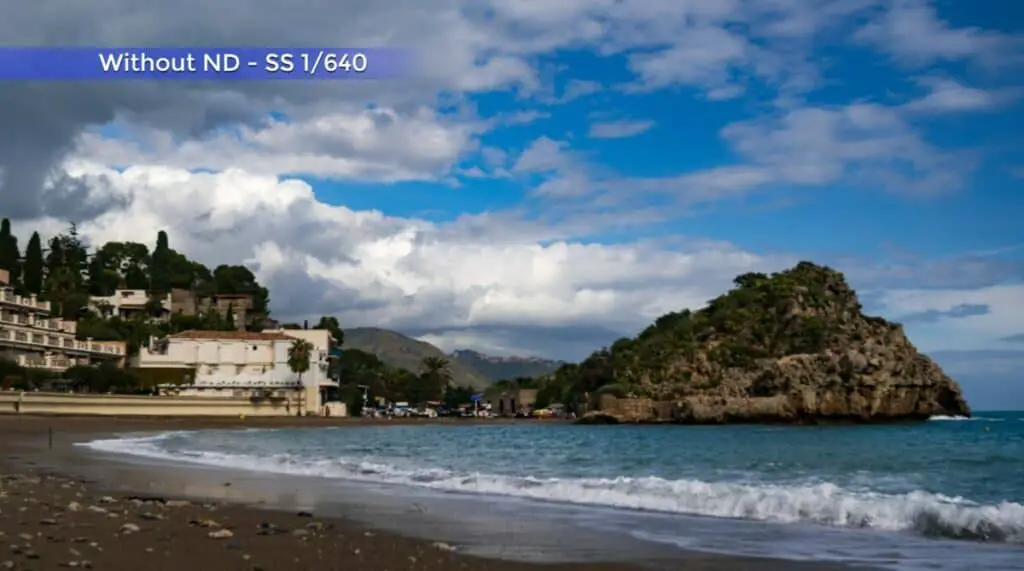
In this example, the effect we get in the waves with a drone is not bad, but it cannot match the much longer exposure obtained with a ground-based camera
ND Filters for Photos with Shallow depth of field
Another reason is to use a very wide aperture in bright light conditions to get a very shallow depth of field and separate the main subject from the background
But in the Mini 3 Pro, like in many prosumer drones, the aperture is fixed, so we can disregard this situation
For photography with the Mini 3 Pro and with drones in general, ND filters are not a must. For someone really serious about photography, ND filters are a desirable item, but not a necessity
Click on this link if you want more about the camera settings of the Mini 3 Pro for Photography
In this article, I show How to make long-exposure photos with the Mini 3 and Mini 3 Pro using ND filters for unusual creative effects
ND Filters for Hyperlapses
Using ND FIlters to Control the Amount of Motion Blur
Time lapses are all about movement and movement involves motion blur, as this is the way our eyes see motion, so the correct amount of motion blur is crucial for time lapses and hyperlapses, a make-or-break factor
ND filters are needed For time-lapses and hyperlapses with the Mini 3 Pro, or any other drone or camera. Using ND filters we can fine-tune the correct amount of motion blur
I would not even attempt a hyperlapse without ND filters
ND Filter for the Correct Use of the 180° Rule
By adopting the 180 degrees rule used in videography, when shooting hyperlapses, with an interval of two seconds between each photo the correct shutter speed is one second, with an interval of 3 seconds, 1.5 seconds, a Shutter Speed of 2 seconds for 4 seconds, and so on
Timelapses and Hyperlapses Without ND Filters
Of course, to get such a long shutter speed we need ND filters
If we don’t use ND filters and we have to resort to much faster shutter speeds the result is extremely jumpy and stuttering, unwatchable. This is because there is practically no motion blur
More details about Motion blur, the crucial element of time lapses, in my dedicated article
Limitations with Drones
When shooting timelapses with drones there are some specific limitations compared to traditional cameras, as with drones in most cases we cannot use a shutter speed slower than one second without losing detail due to camera shake
Therefore we have to somehow compromise and reduce the amount of motion blur, but a decent result can still be obtained
As you can see the movement of the cars and the smoothness of the cloud are acceptable in this drone timelapse with a Shutter Speed of half a second
Click on this link if you want to know everything about timelapses and Hyperlapses with the DJI Mini 3 Pro
Which ND Filter to Use
ND filters come in different strength values, according to the amount of light reduction
In photography and videography, we are familiar with the concept of exposure stops to describe variations of luminosity
The idea of stops can be applied to any of the three parameters of exposure: ISO, Aperture, and Shutter Speed
For the use of ND filters with the Mini 3 Pro, or with any prosumer drone, we should focus on Shutter Speed, as it is the main parameter we want to control
By doubling the shutter speed, we reduce the amount of light hitting the sensor by one stop. As an example, by increasing the shutter speed from 1/25 to 1/50, we reduce the luminosity by one stop
In most cases, the strength of ND filters is expressed by an ND value indicating the number of stops of light reduction, starting from ND2 which reduces the luminosity by one stop
| Luminosity Stops | ND Value |
| 1 | 2 |
| 2 | 4 |
| 3 | 8 |
| 4 | 16 |
| 5 | 32 |
| 6 | 64 |
| 7 | 128 |
| 8 | 256 |
| 9 | 512 |
| 10 | 1000 |
| 11 | 2000 |
As an example, with the Mini 3 Pro on a bright day, using the minimum ISO value of 100, we obtain a shutter speed of about 1/8000 for correct exposure. Assuming that we want to use a SS of approximately 1/50 for the correct amount of motion blur. Let’s see which strength value we need
| ND Value | Luminosity stops | Shutter Speed |
| No ND filter | 0 | 1/8000 |
| 2 | 1 | 1/4000 |
| 4 | 2 | 1/2000 |
| 8 | 3 | 1/1000 |
| 16 | 4 | 1/500 |
| 32 | 5 | 1/250 |
| 64 | 6 | 1/125 |
| 128 | 7 | 1/60 |
In this case, we should use an ND128 filter to be able to use a shutter speed of 1/50 of a second
Which ND Filter for Video?
When shooting video the optimal shutter speed is 1/50 or 1/60 of a second, according to the frame rate we are using. These are not very slow values, therefore we don’t need very strong filters
For video, a set of ND filters ranging from ND8 to ND 68 cover all the needs in all different light conditions with most cameras or drones
In the case of the DJI Mini 3 Pro, I would also add an ND128, as this model gathers a higher amount of light, due to the extremely wide aperture of f1.7
Which ND Filter for Photos and Hyperlapses?
For hyperlapses and photos with a drone like the Mini 3 Pro in many cases, we use a shutter speed of one second. It is a much slower value compared to the ones used in video, therefore much stronger filters are needed
For hyperlapses and photos, we use ND filters with values ranging from ND 64 to ND 1000, according to the light conditions
In the case of the DJI Mini 3 Pro on certain occasions, a ND2000 is useful, although not mandatory, due to the very wide aperture of the lens
Which ND filters should I buy for the DJI Mini 3 Pro?
ND filters are meant to simply reduce the amount of light entering the sensor. Some lower-quality ones might introduce unwanted color casts
Freewell is a brand that over the years has consistently produced quality filters for drones at reasonable prices, even though not the cheapest
For the Mini 3 Pro, Freewell offers a combination of 6 ND filters ranging from ND4 to ND64, so from two to six stops, which covers all videography needs
The pack also includes a filter with stronger values, ND1000, which is needed for photography and hyperlapses
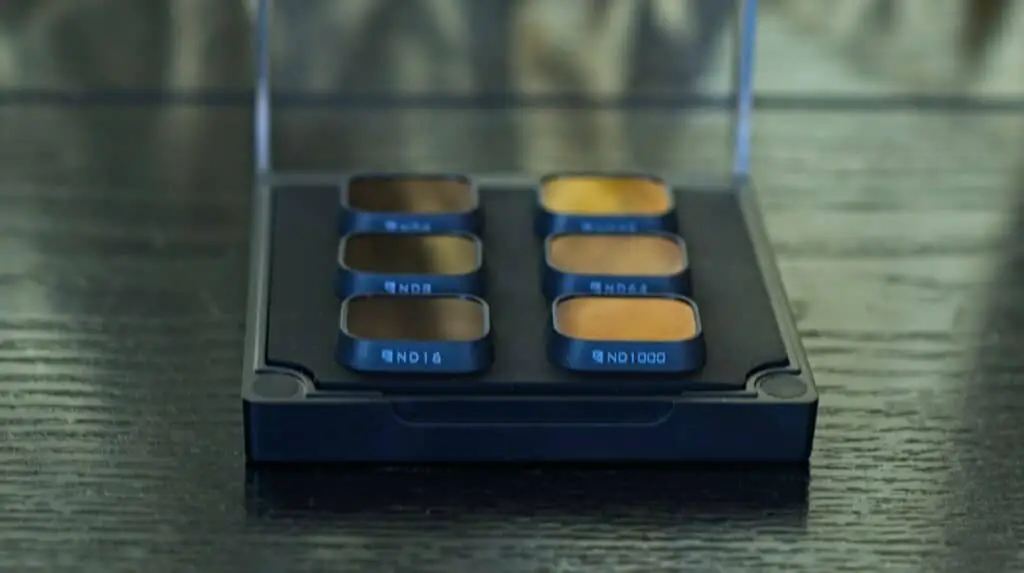
How To Insert an ND Filter
The lenses of previous models of the Mini series were shaped in a way that made fitting filters quite hard
With the Mini 3 Pro lens’s new design, putting on and removing the filters is easy. Just rotate slightly clockwise with the label Freewell on the upper side
